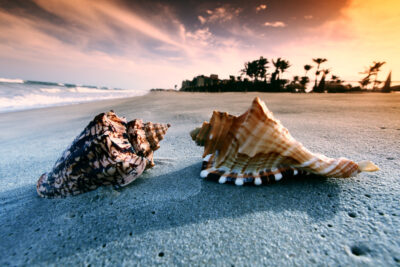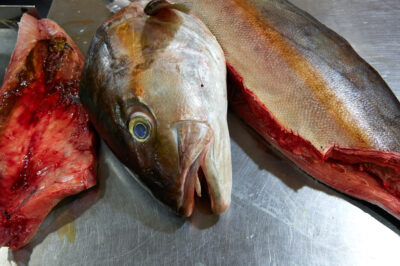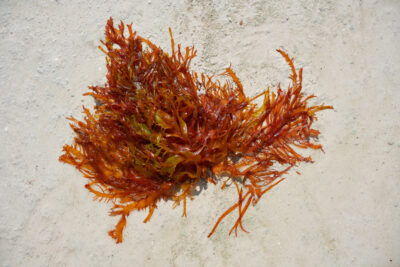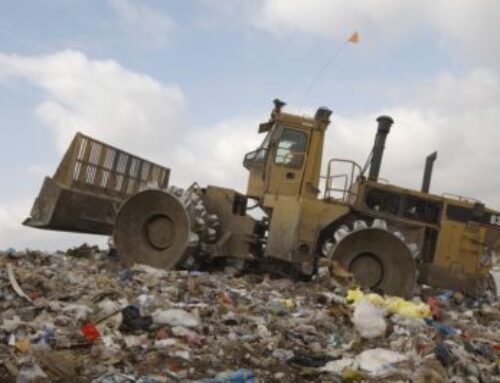Red Tide fish kills resulted in thousands of tons of dead fish in Florida. The red tide of the algae bloomed largely and lethally in Florida in 2021. And as it bloomed, it suffocated thousands of fish and forms of sea-life.

Red Tide algae bloom destroys beaches like this one with a waste management crisis-thousands of tons of dead fish.
They washed up on beaches and floated belly-up in backyards. People filled dumpsters with them. And the dead fish or fish kills, as they are called, repelled both Floridians and tourists alike.
Waste Challenge: What Can You Do with Truckloads of Dead Fish?
We recently acquainted you with the backstory of the Red Tide. We told you about the red algae bloom that created terrible death to sea-life and rolled thousands of tons of dead fish onto Florida beaches. Of course we informed you of the waste problem created by the arrival of tons of dead fish on the beaches. But that is not the end of the story.
Applause for Pinellas County Department of Solid Waste
Certainly, it is difficult to imagine any community could create something useful out of the bloody, fly-infested fish,

From Waste to Energy: Some Dead Fish from the Red Tide Became Energy through Waste Management Technology. Read on to see how.
sea creatures and plant debris. And yet, with a little waste system engineering, and a lot of heart, at least one Florida county has discovered a gift from the poor dead fish and plants. It’s like finding diamonds in the dirt. Pinellas County Department of Solid Waste found electrical power in the fishy debris.
The Red Tide Creates a Recyclable Resource: Power
Through the miracle of waste technology, they made electricity from tons of dead fish, tangled plants and sea debris. At Consolidated Waste Systems, we are always on the look-out for positive waste-to-energy stories. And we now bring you an amazing story from the Pinellas County Solid Waste Department. We congratulate them for transforming thousands of dead fish into electricity.
In July of this year, Josh Rojas of Bay News 9 reported that the “Pinellas County Department of Solid Waste has received more than a thousand tons of dead fish killed by red tide since early June, and a portion of the debris has been turned into electricity.” If you are unaware of waste-to-energy technology, turning thousands of dead fish into electricity might seem like science-fiction
The Magic of Recycling Red Tide Debris into Electricity
Recycling program manager Stephanie Watson stated, “The facility generates enough electricity each day to power about 45,000 homes.” She added, “typically between 80-to-90% of all the county’s garbage is burned to save precious space in the landfill.” We thought you might want to know a little bit about how they do such magic. Thus, this blog takes a simplified look at some of the technological main steps in the process.
The Basic Secrets Behind Waste-to-Energy Plants
In general Waste to Energy plants usually “burn municipal solid waste (MSW), often called garbage or trash…” They burn it in order to “produce steam in a boiler that is used to generate electricity.”

Pinellas County Solid Waste Department is Fighting Red Tide Waste With Eco Clean Industry.
Although Pinellas County burned the dead fish of the Red Tide, MSW (Municipal Solid Waste,) is often simply paper, garbage, plastics, yard waste, and wood.
For every 100 pounds of MSW in the United States, we can only burn about 85 pounds to fuel electricity.
- Thus, “Waste-to-energy plants reduce 2,000 pounds of garbage to ash weighing 300 to 600 pounds.”
- Therefore, “…they reduce the volume of waste by about 87%.”
Dead Fish Go Step By Step from Red Tide Debris to Electric Power
Experts tell us, “The process of generating electricity in a mass-burn waste-to-energy plant has seven stages…”
1. In the first place, we must dump the Red Tide Debris out of trucks into a large pit.
2. Then the claw of a huge crane grabs all the dead fish and other debris. The claw drops it into a combustion chamber.
3. Now the dead fish have become fuel, and they are burned, releasing heat.
4. Subsequently, the heat transforms water into steam in a boiler.
Final Steps On the Way to Becoming Clean Power
That’s about half of the journey for the dead fish. And as the facility continues to transform them into to electricity,

Harmless Looking Red Algae Plant Blooms into a Waste Management Crisis.
their untimely deaths in the Red Tide will not have been in vain. They will become power in the 45,ooo homes of the Florida community surrounding the Pinellas County Solid Waste Department.
5. And then, “The high-pressure steam turns the blades of a turbine generator to produce electricity.”
6. Next, must come a very important and purifying step. The “air pollution control system removes pollutants from the combustion gas before it is released through a smoke stack.”
7. Finally only ash remains. We clean it from the boiler and the pollution control system. Dead fish have given the community new power.
Red Tide Indirectly Makes Electricity
Regretfully, Stephanie Watson stated, “So, about 15% of Red Tide debris comes to our Waste-to-Energy facility,” she added, “While we would prefer for it all to go here, we can’t because, if the load is sandy, it’s not good for our equipment at the Waste-to-Energy facility. It’s a big machine. So, we send it to the landfill.”
So, as technology progresses, Consolidated Waste Technology hopes that the waste-to-energy process will become refined in many ways. And, needless to say, used in many more places.

We hope the future brings mitigation of the Red Tide through Ecologically-Minded, Clean Waste Management.
Terrific Take-Away from the Red Tide
In July, the facility received 1,035 tons of dead fish, gifts of the Red Tide. Now, please take note–that word is tons. It is not just thousands of fish, but hundreds of tons of fish. However, they could only use 144 tons of it, and as stated above, had to consign the rest to the landfill. (Hopefully future technology will address this issue.)
Stephanie Watson explained, “Here at our landfill we have about 75 years left of life,” she said. “It’s a precious, finite asset. We don’t want the landfill to fill up.” And that is another waste-related, ecological problem faced by most of the landfills in the United States. But that’s also another topic for a future blog.
We of Consolidated Waste Systems applaud the Pinellas County Department of Solid Waste for adopting a commitment to a zero waste policy for the landfill by 2050. That’s almost as impressive as turning the dead fish of the Red Tide into electricity.
As always, Consolidated Waste Systems thanks you for reading our blog. And we hope you will return to our blog to discover the latest news in waste systems, ecology and the promise of a leaner, cleaner, greener world.



